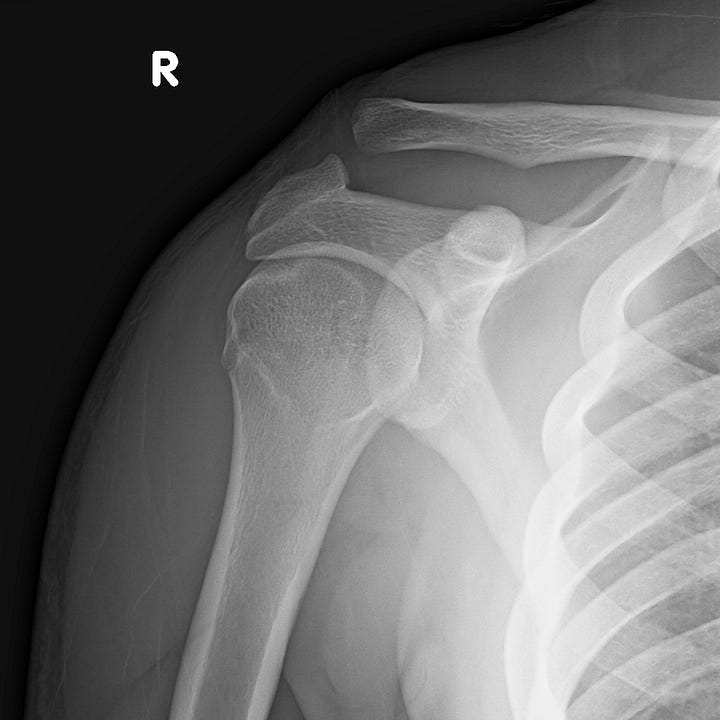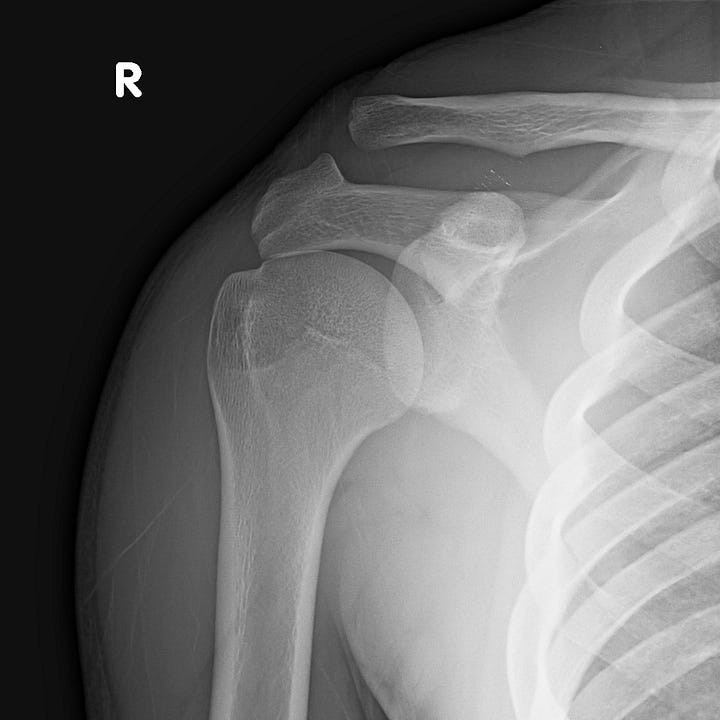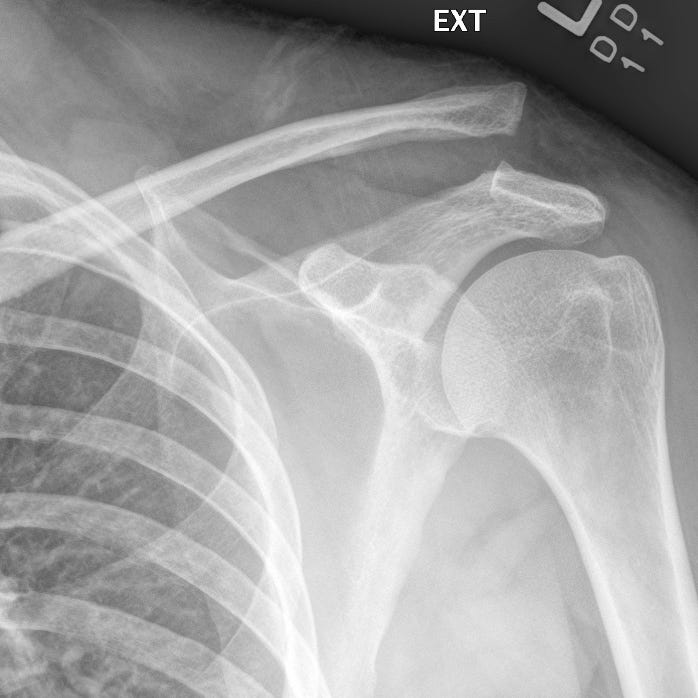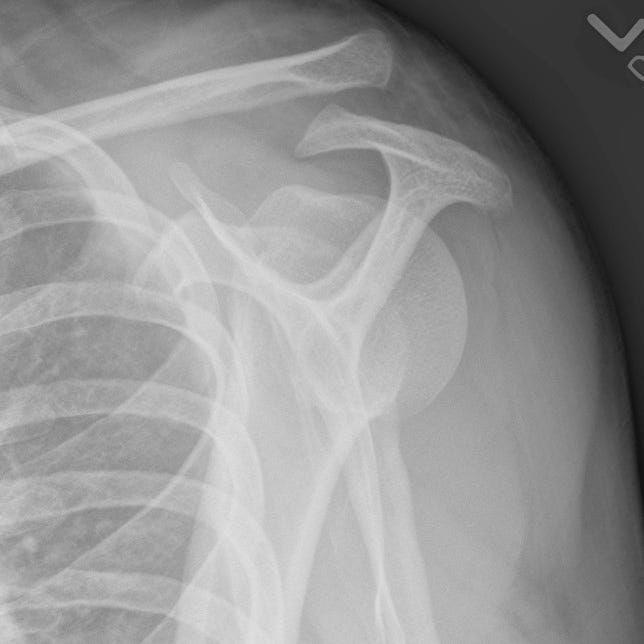Acromioclavicular separation can result from a direct blow to the shoulder or a fall onto the shoulder with the arm adducted. These mechanisms force the scapula inferiorly and medially with respect to the distal clavicle. In the case of a fall on the outstretched hand, the scapula is transiently displaced superiorly from the clavicle, injuring the acromioclavicular ligament.
The inferior cortex of the acromion and distal clavicle should normally align on the AP view. The distance between the acromion and distal clavicle is variable but usually less than 8–10 mm. Weight-bearing views with comparison to the uninjured shoulder may be necessary to demonstrate subluxation.
Grade I
Normal or slight acromioclavicular subluxation. Acromioclavicular ligament sprain with intact coracoclavicular ligament.
Grade II
Acromioclavicular ligament tear with acromioclavicular widening or distal clavicular elevation. Coracoclavicular ligament injury without widening of the normal coracoclavicular distance (< 1.3 cm).


Grade II acromioclavicular separation. The distal clavicle is separated from the acromion by 1 shaft’s width and is elevated 1.2 cm with respect to the coracoid.
Grade III
Acromioclavicular and coracoclavicular ligament disruption. Distal clavicle elevation relative to the acromion. Coracoclavicular distance > 1.3 cm or a side-to-side difference of > 5 mm on bilateral AP views. Weight-bearing radiographs may be necessary to reveal these findings.


Grade III acromioclavicular separation. The distal clavicle is displaced from the acromion by 1.5 shafts’ width and is elevated 3 cm with respect to the coracoid.
Grade I and II injuries are usually treated conservatively. Grade III injuries may ben- efit from operative stabilization



